How to Clean a Ceiling Fan Without Making a Dusty Mess

Imagine turning on your ceiling fan to have the rotating blades throw dust and pollen all over your room. Odds are, if you run your ceiling fan regularly and haven’t cleaned it in a few months, this is likely the case.
Learning how to clean ceiling fans will keep that from happening. And, if your fan is wobbly when it’s on, excess dust build-up on blades and in the motor may be the culprit, according to Home Depot. If you have a lighted ceiling fan, cleaning it will help brighten up the room, too.
It can definitely be daunting to look up and wonder how in the world you’re going to reach that contraption to get it sparkling clean; it might even be enough to keep you from using your fan.
We gathered all the tips and tricks to make your ceiling fan an efficient source of refreshing air and bright light rather than a convenient perch for floating dust.
Use Your Fan to Warm a Room
When to Clean a Ceiling Fan
The best time to clean a ceiling fan is in spring right as the weather is warming up. But if you avidly use your ceiling fan to heat your room, deep clean it before the winter season, too.
How to Clean a Ceiling Fan
Now, for the main event: Cleaning your ceiling fan! We'll walk you through how to clean each part of your ceiling fan and how to prevent dust from getting everywhere.
Disclaimer: Hometalk may receive a small affiliate commission from purchases made via links in this article but at no cost to you.
Tools and Materials Needed:
- Old sheet/drop cloth or vacuum
- Step stool or step ladder
- Extendable duster with flexible head (if you don’t have a step ladder—for lighter dusting jobs)
- Old pillowcases (one for each blade—for heavier dusting jobs)
- All-purpose cleaner spray (degreasing cleaner for kitchen ceiling fans)
- Dust mask
- Hair net or hat
- Protective gloves
- Soft, dry microfiber cloth
- High-efficiency replacement bulbs (optional)
- Drops of liquid dish detergent
- Sponge
- Towel
- Can of compressed air
1. Shut Off the Fan
It goes without saying to shut off the fan before cleaning. For an extra layer of safety, it’s recommended to cut the power to the fan by shutting off the correct circuit in your electrical box.
2. Prep the Area
Before cleaning your ceiling fan, put down an old sheet or a drop cloth under the fan to gather falling dust and dirt. (You’ll definitely want to do this if the fan is located above the furniture.) Or, thoroughly vacuum the area after you clean the fan.
3. Position a Stool
Open up your stool or ladder on the side of the fan, not directly underneath it, for room to maneuver.
4. Dust the Blades
There are essentially two ways to dust your blades: an extendable duster for light dusting or pillowcase “dusters” for heavier buildup.
- Extendable duster: Spray your duster head with an all-purpose cleaner and dust the top, bottom, and sides of each blade. If you have a ceiling fan in the kitchen, opt for a degreasing all-purpose cleaner—you’d be surprised at how greasy a kitchen fan can get from stovetop splatters. After you’re done, clean the duster head per the manufacturer’s instructions.
- Pillowcase duster: Carefully slide a pillowcase over each blade (the entire blade should be inside the pillowcase). Once the pillowcases are on the blades, spray an all-purpose cleaner on them (the liquid will soak through the fabric) to moisten them to make it easier to remove the dust and grime. Be extra careful not to let any cleaner get near the fan’s motor. Using your hand, gently move the pillowcase around on both sides of the blade, like a dusting cloth, to remove the dust, still keeping the pillowcase on the blade to contain the dirt. Do not use pressure when dusting or the blades could bend. Once you’re finished, carefully take the pillowcases off of each blade (keep the opening facing up so dust doesn’t spill out), take them outdoors, turn them inside out to empty the dust, then clean them in the washing machine.
What Size Pillowcases for Blades?
5. Clean Lights and Globe
Replace any bulbs that are out with high-efficiency bulbs. Wipe dusty bulbs with a soft, dry microfiber cloth.
If you have a globe, carefully remove it and bring it to a sink where you can wash it with a non-abrasive sponge in warm, soapy water to remove grime, dirt, and any dead insects. Dry the globe completely with a towel before putting it back on the fan.
6. Clean the Motor
Use compressed air to remove dust lodged in the motor’s housing.
7. Clean the Pull Chain
Wipe the pull chain with a soft, dry microfiber cloth. (You can even spice up your pull chain if you have a unique item you’d like to attach.)
8. Return Power
Turn on the circuit breaker to the fan or turn it on via its pull chain or wall switch. Damp blades may “grab” it from the air while rotating, so make sure you don’t turn on your fan until the blades are completely dry from dusting.
What About a Super High Ceiling Fan?
Tips for Keeping a Ceiling Fan Clean
Regular weekly dusting will help cut down on dust buildup. It’s a good idea to use a microfiber cloth to polish each blade (top, bottom, and sides) with a dust-repellent spray, such as Pledge or Endust.
Also, try not to run your ceiling fan when you’re not using it or not in the room. The more the fan’s blades move through the air, the quicker they’ll pick up dust.
If your ceiling fan is outdated but you don’t want to spend the money to replace it, why not renovate it? Use spray paint, washi tape, fabric, or even contact paper to rejuvenate and makeover your ceiling fan.
Do you have a ceiling fan that’s high up or has huge blades that you’ve cleaned? We’d love to hear about your tricks, please share them below!
Enjoyed the project?
Comments
Join the conversation
-
 Patrice
on May 26, 2023
Patrice
on May 26, 2023
I use this process right here: pressure wash near me
-




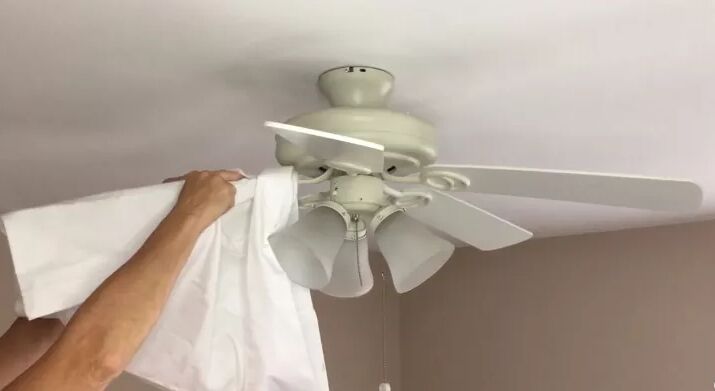


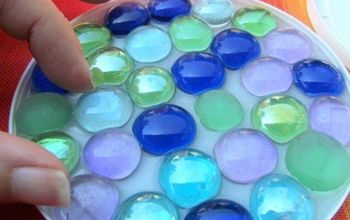

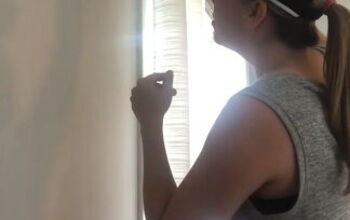

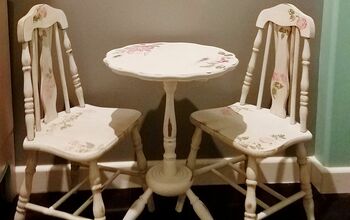


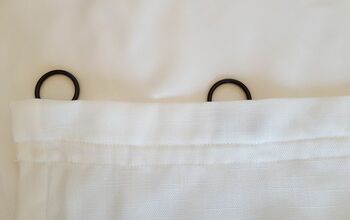











Frequently asked questions
Have a question about this project?